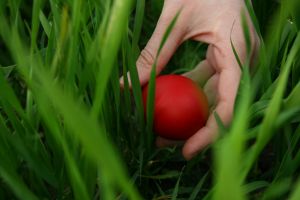New Method for Picking the 'Right' Egg in IVF

In a groundbreaking study, Yale School of Medicine researchers and colleagues at the University of Oxford have identified the chromosomal make-up of a human egg.
This discovery may soon allow them to avoid using abnormal -- or aneuploid -- eggs during infertility treatments, and instead to pick eggs healthy enough for a successful in vitro fertilization (IVF) cycle.
The results are published in the May issue of the journal Human Reproduction.
Only a few oocytes (eggs) per IVF treatment cycle are able to produce a pregnancy because many eggs have the wrong number of chromosomes.
If the egg is missing a chromosome or has an extra chromosome, this is referred to as aneuploidy. This problem increases as women age.
Oocytes are surrounded by cells, called cumulus cells, which regulate and assist the process of egg maturation.
In this study, Yale Fertility Center director Dr. Pasquale Patrizio, and Dagan Wells of the University of Oxford studied genes expressed in the cumulus cells.
They were able to identify a set of genes less active in cells, which is associated with abnormal eggs.
They characterized two genes -- SPSB2 and TP5313 -- and found the expression of these genes was consistently underrepresented in cumulus cells surrounding abnormal eggs, while these same genes were normally expressed in eggs with the correct number of chromosomes.
The identification of these genes in cumulus cells can serve as a novel, non-invasive marker to identify abnormal oocytes and thus ultimately improve IVF success rates,
said Patrizio, professor in the Department of Obstetrics, Gynecology and Reproductive Sciences at Yale.
We can use cumulus cells surrounding the eggs to gain insight into the health of an egg. These cells are now able to inform us about the chromosomal makeup of an egg. This can help us know if it is the 'right egg' to be fertilized and produce a baby.
This finding opens up the possibility of a safe, effective, and inexpensive way of identifying healthy eggs, potentially lowering the risks of miscarriage and Down syndrome,
said Wells.
By conducting these tests before eggs are fertilized, ethical concerns about an analysis of human embryos are avoided.
Other authors on the study include Elpida Fragouli, Amy E. Lager, and Umit A. Kayisli.
Wells is supported by the National Institute for Health Research Biomedical Research Centre, Oxford; the work was also supported by a grant from Gema Diagnostics, Inc.
Story Source: The above story is reprinted from materials provided by Yale University. The original article was written by Karen N. Peart.
Journal Reference: Alteration of gene expression in human cumulus cells as a potential indicator of oocyte aneuploidy
TODAY'S BOOK SUGGESTION:
 The Insider's Guide to Egg Donation: A Compassionate and Comprehensive Guide for All Parents-to-Be
The Insider's Guide to Egg Donation: A Compassionate and Comprehensive Guide for All Parents-to-Beby Wendie Wilson-Miller and Erika Napoletano
-- In their search for alternative means for building a family, those who face infertility turn to the nearly 500 reproductive specialty clinics across the United States.
While egg donors enter into the picture for a variety of reasons, every reason has the same desired result: a family to call one’s own.
Same-sex and single-by-choice parents are more prevalent than ever in the fertility industry, and there is no definitive, up-to-date guide to help families of all types approach egg donation, especially these niche groups. Resources are fragmented, true regardless of the family structure.
The Insider's Guide to Egg Donation is the first how-to-handbook helping families of all types navigate the less talked about but widely practiced egg donor landscape with a warm and friendly tone, giving those in search of a different kind of stork the answers and information they need as they begin to research family-building options.
Click to order/for more info: The Insider's Guide to Egg Donation
Don't have a Kindle? Get your Kindle here, or download a FREE Kindle Reading App.
Category: In vitro fertilisation, In vitro fertilization, infertility, IVF










0 comments